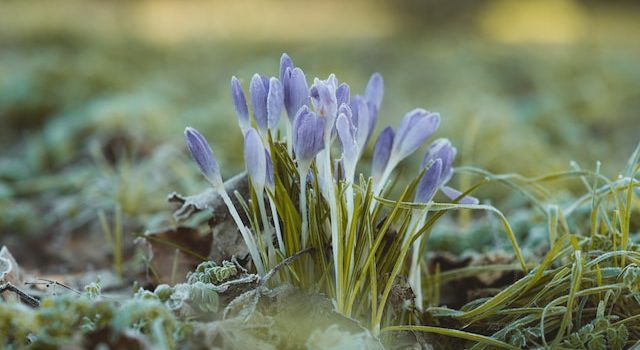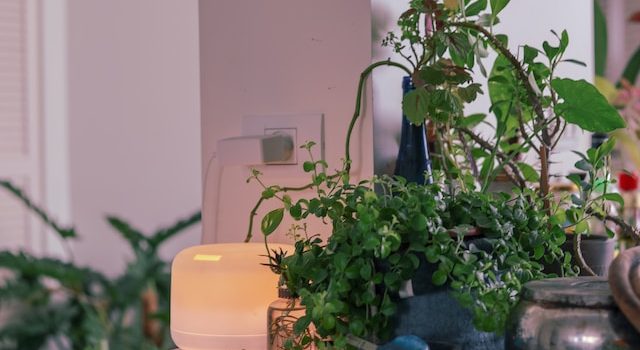Are you looking to add some greenery to your freezing backyard? Perhaps you’re tired of planting annuals that only last for one season. Well, look no further than perennial plants! These tough and resilient plants not only survive in freezing temperatures but thrive in them. In this post, we’ll explore the top 7 perennial plants that can withstand even the harshest winters. Plus, we’ll dive into how to care for these hardy beauties year-round so that they continue to flourish season after season. So grab a cup of hot cocoa and let’s get started on creating a winter wonderland in your own backyard!
The Top 7 Perennial Plants That Thrive in Freezing Temperatures
1. Winter Aconite:
Winter aconite, also known as Eranthis hyemalis, is a bulb perennial that blooms in late winter or early spring. These bright yellow flowers are perfect for adding a pop of color to your snowy garden. They prefer well-drained soil and partial shade.
2. Snowdrop:
Another bulb perennial, snowdrops (Galanthus) are best planted in the fall for their late winter/early spring blooms. These delicate white flowers can handle full sun or partial shade and work great in rock gardens or along borders.
3. Hellebore:
Also known as the Christmas rose, hellebores (Helleborus) bloom from late winter into early spring with colors ranging from pink to green to blackish-purple. They thrive in shady areas and require moist but well-drained soil.
4. Siberian Iris:
Siberian irises (Iris sibirica) have stunning blue-purple flowers that bloom in early summer but their foliage provides interest all year round thanks to its upright form and narrow leaves. They grow best in full sun or partial shade with moist soil conditions.
5. Coneflower:
A classic summer bloomer, coneflowers (Echinacea purpurea) come back year after year with their daisy-like purple-pink petals surrounding an orange-brown center cone which attracts pollinators like bees and butterflies throughout the season.
6. Russian Sage:
Russian sage (Perovskia atriplicifolia) has silver-green foliage which pairs beautifully with its soft lavender-blue flower spikes that bloom mid-summer through fall when many other perennials have finished blooming! It prefers full sun and well-draining soil conditions.
7.
Goldenrod
Goldenrod plants add golden hues of beauty to any garden landscape especially during autumn months when it produces beautiful warm-colored tall spikes of tiny blossoms.
This plant can thrive in almost any type of soil, and requires minimal attention to grow.
The Different Types of Perennial Plants
Perennial plants are those that live for more than two years. They can be classified based on their growth habit or the seasons in which they bloom.
One type of perennial plant is the herbaceous perennial, which dies back to the ground in winter and regrows from its roots in spring. Examples include asters, coneflowers, and hostas.
Another type is the woody perennial, which has hard stems and branches that remain above ground over winter. Trees and shrubs fall into this category.
There are also evergreen perennials, such as holly and boxwood, which retain their leaves throughout the year.
Some perennials bloom only once a year during specific seasons. For example, tulips are early blooming spring perennials while mums typically bloom in late summer or fall.
Others may have multiple blooming periods throughout different seasons like echinacea (coneflower) that blooms through Summer till Fall season
When choosing perennial plants for your garden it’s important to consider not only their blooming season but also their growing conditions such as sun exposure and soil requirements.
The Pros and Cons of Perennial Plants
Perennial plants are a popular choice for gardeners because they require minimal maintenance and can last for several years. However, like any plant, there are pros and cons to consider before adding them to your landscape.
One of the main benefits of perennial plants is their longevity. Unlike annuals that only live for one growing season, perennials can survive for many years with proper care. This makes them a cost-effective option in the long run since you won’t have to replace them every year.
Another advantage is that some perennial plants bloom multiple times throughout the year or have extended blooming periods, providing continuous color and interest in your garden. They also tend to be hardier than other types of plants and can withstand extreme weather conditions such as freezing temperatures.
However, it’s important to note that not all perennial plants are created equal. Some varieties may become invasive or take over your garden if left unchecked. Additionally, certain species may require specific soil conditions or pruning techniques to thrive.
Another potential con is that while perennials do come back each year, they may not always look as vibrant or healthy as the previous season due to natural wear and tear or disease issues.
While there are advantages and disadvantages when it comes to planting perennials in your garden, ultimately it depends on personal preference and what works best for your specific gardening needs.
How to Plant and Care for Perennial Plants
Planting and caring for perennial plants is not as complicated as it may seem. Here are some key steps to ensure your perennials thrive in freezing temperatures.
First, choose the right location. Perennial plants need adequate sunlight and well-drained soil to grow. Make sure the planting area receives at least six hours of direct sunlight a day and the soil drains properly.
Next, prepare the soil by adding organic matter such as compost or aged manure. This will help improve soil texture, increase nutrient availability, and promote healthy root growth.
When planting perennials, dig a hole slightly larger than the plant’s root ball and gently place it in the hole so that the top of its crown is level with the surrounding soil. Then backfill with soil around it.
After planting, water thoroughly to settle any air pockets in the soil. Keep an eye on your newly planted perennials until they become established which can take up to a year or two depending on species.
Caring for perennial plants involves regular watering during dry spells since drought conditions can cause them stress or even death if left untreated. It’s also important to mulch around their base every spring which helps retain moisture in their roots while keeping weeds away from competing for nutrients.
Perennial pruning should be done regularly too but only when necessary like after flowering has finished or when stems get leggy or diseased-looking.
By following these simple steps, you’ll enjoy beautiful blooming perennials all winter long!
What to Do with Perennial Plants in the Winter
Perennial plants are an excellent addition to any garden. They come back year after year, making them a cost-effective and low-maintenance option for plant lovers. However, when the cold winter months arrive, it’s essential to take proper care of your perennial plants.
One critical step is to cut back your perennials before the first frost hits. This helps prevent disease from spreading throughout the plant during the dormant season. Additionally, removing dead foliage can give your garden a neater appearance.
Another way to protect perennial plants in winter is by mulching around their base once the ground freezes over. Mulch acts as insulation against extreme temperature fluctuations and can help retain moisture near the roots – which is crucial for healthy growth in spring.
If you live in an area with heavy snowfall or harsh winters, investing in covers or cages designed specifically for protecting plants can be beneficial too.
Stay on top of pest control even during winter months! Pests like spider mites and aphids may still be present during this time despite lower temperatures outside. Using organic pest control methods such as insecticidal soap sprays can keep your perennials healthy all year round.
Conclusion
Perennial plants are an excellent addition to any garden as they provide year-round beauty and require minimal maintenance. With the right care and attention, these hardy plants can thrive even in freezing temperatures.
When choosing which perennials to plant in your garden, consider factors such as sunlight, soil type, and water requirements. The seven plants discussed in this article are just a few examples of perennials that can survive cold winters and add color to your landscape.
Remember to properly prepare your perennial plants for winter by cutting back dead foliage, covering them with mulch or other protective materials, and watering them adequately before the first frost.
By following these tips on how to plant and care for perennial plants that thrive in freezing temperatures, you’ll be able to create a beautiful outdoor space that will last for years to come.


















